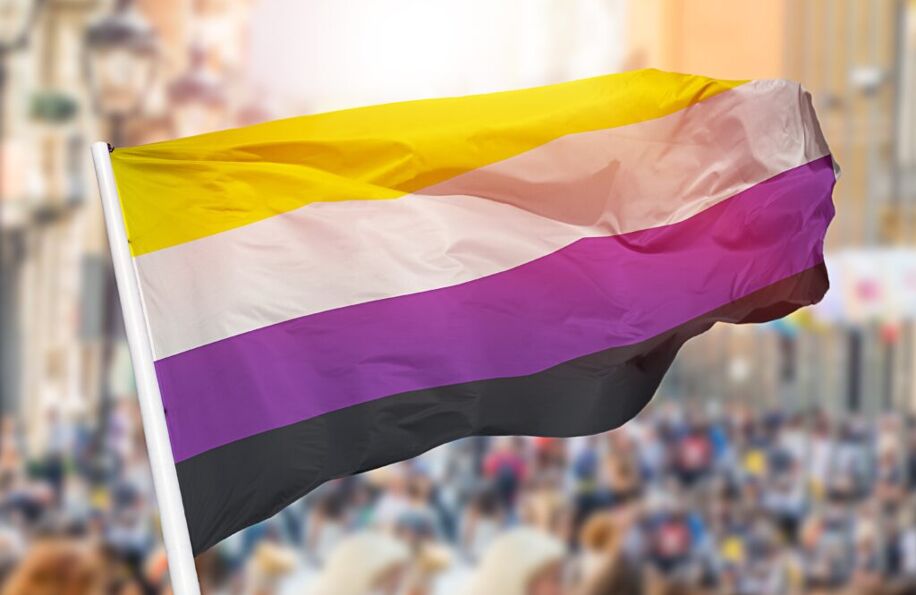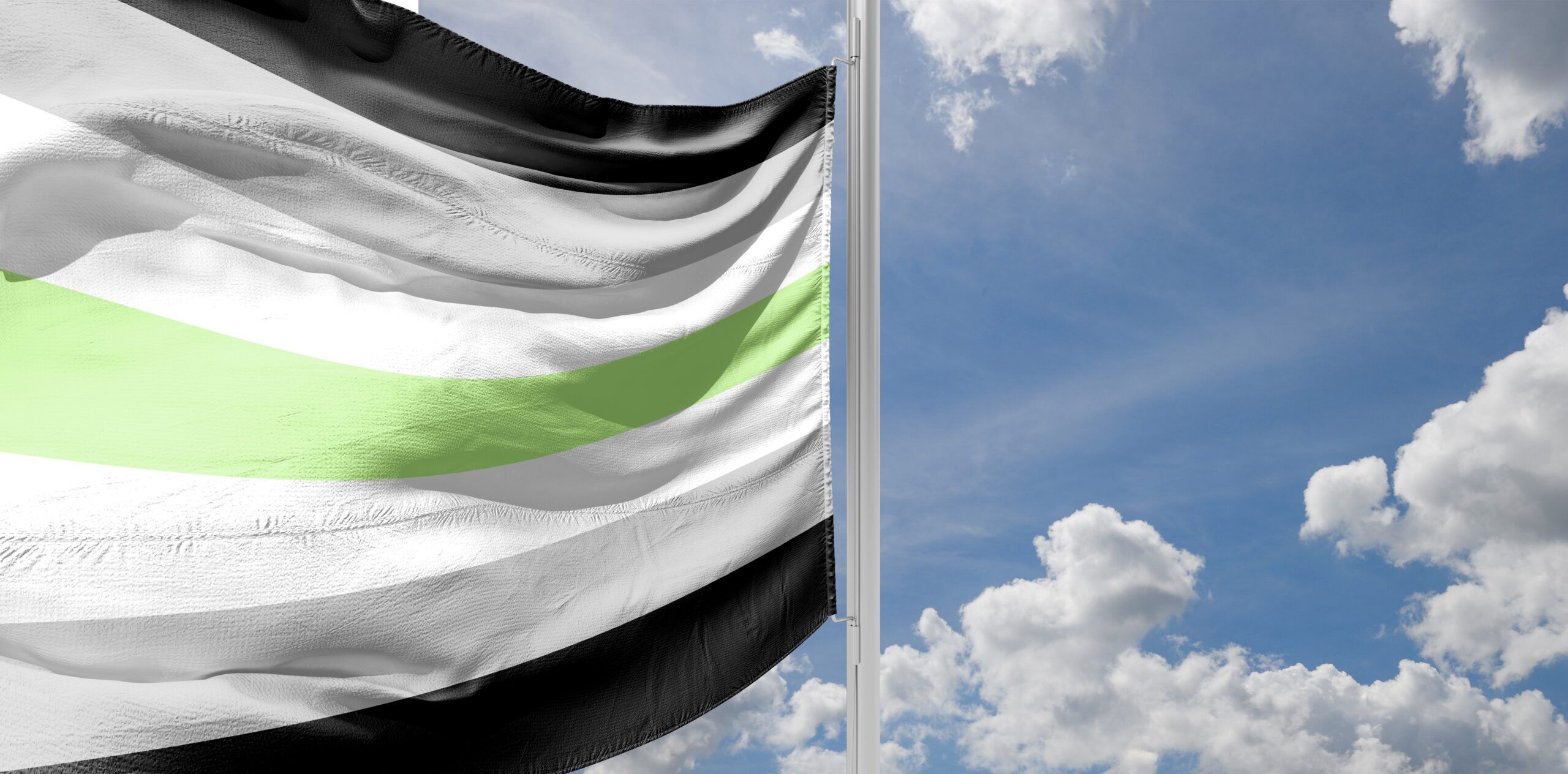The agender flag we wave today was created by Tumblr user Salem X in 2014. The flag has seven horizontal stripes in the colors black, gray, white, and green.
Because the agender identity falls under the nonbinary umbrella term some might wave both the agender flag and the nonbinary flag to express their identity. However many find that the agender flag is more specific to their identity experience.
What do the colors of the agender flag stand for?
In order from top to bottom this is what each stripe stands for:
- Black and White: Represents the absence of gender.
- Gray: Represents being semi-genderless.
- Green: Represents nonbinary genders.
Alternative version of the agender flag
As stated above, many agender individuals will wave the nonbinary flag or the genderqueer flag as this identity falls under that greater umbrella.
A genderqueer or nonbinary person does not identify with the conventional gender identities that society implies such as male or female. Some individuals have a stronger connection to one term over the other and will identify accordingly. Others might identify equally with all identities and use all three flags.
Genderqueer Flag
(insert picture of genderqueer flag)
Before the wider adoption of the nonbinary identity and creation of the nonbinary flag, a lot of nonbinary individuals identified with the genderqueer flag.
The modern genderqueer flag was created by Marilyn Roxie in 2011 and is the 3rd and final version of the flag.
It has three horizontal stripes in three colors. The colors symbolize as follows:
- Lavender: Androgyny and queerness.
- White: Agender identity and gender neutrality.
- Green: Genders outside of the binary.
Nonbinary flag

The nonbinary flag was created by Kye Rowan in 2014. You can read more about this flag history here (link to nonbinary flag article)
The Rowan flag has four distinct horizontal stripes. In order from top to bottom, each stripe stands for:
- Yellow: People whose gender falls out of the binary.
- White: People with many or all genders.
- Purple: People with genders that mix both male and female.
- Black: Those who consider themselves to not have a gender.
Want to learn more about being agender?
Agender refers to those who do not have a gender, they are genderfree or genderless. This means that agender people “lack a gender” or do not identify with any particular gender. Agender people may use a variety of pronouns such as they/them or she/her, a combination, or many other pronoun options and one’s appearance can never define which pronouns or identity that person identifies with.
Related:
The History of the Pansexual Pride Flag
Jasper V. created this flag to better represent pansexual sexuality and what it means to be a part of this community.
It is normal to feel like you don’t identify with one single gender or the norms that society imposes on us. Gender is fluid and for many, nonexistent, there are a variety of ways to approach it from changing your pronouns to medical procedures to the way you dress.
Closing thoughts
The bottom line is representation matters. Flags are a necessary tool when it comes to representing a community, identity, or sexuality. Flaunting an agender flag is a perfect way to feel pride for being agender or to show resistance against those who oppress the LGBTQ+ community.
This is not only important for community members who want to feel unified, but also for visibility purposes. The colors and symbols on a flag show the world what it means to be a part of that community and give everyone a chance to show their pride.
Visit our identities page to learn more about other gender and sexual identities that make up the LGBTQ+ community, and subscribe to the INTO newsletter to keep on top of the latest happening in our community.
Don't forget to share:
Help make sure LGBTQ+ stories are being told...
We can't rely on mainstream media to tell our stories. That's why we don't lock our articles behind a paywall. Will you support our mission with a contribution today?
Cancel anytime · Proudly LGBTQ+ owned and operated
Read More in Culture
The Latest on INTO
Subscribe to get a twice-weekly dose of queer news, updates, and insights from the INTO team.
in Your Inbox














